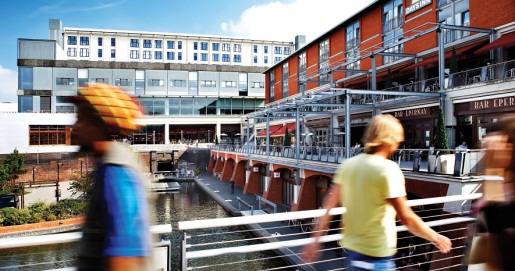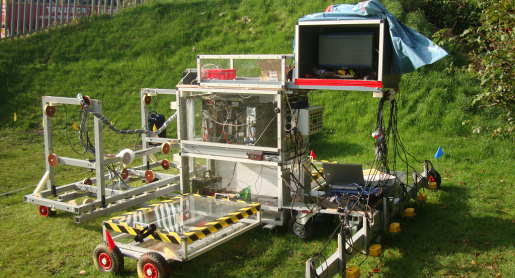The city of the future is an unknown quantity, but what we can be certain of is that the way in which we live, work, travel, communicate and use information will be different from today.
The space in which we do this – predominately cities – needs to be able to adapt and keep our lives on track, whether this is to do with how we design and construct our buildings or how we manage and maintain infrastructure. For this, we also need to understand our cities through monitoring our infrastructure above and below the ground using both remote sensing technologies and embedded or attached sensors.

Urban-environmental research at Birmingham is led by Professor Christopher Rogers , together with Dr Nicole Metje, Dr David Chapman and Dr Dexter Hunt and a large team of post-doctoral and postgraduate researchers. A few of this group’s current and recent world-leading projects, some of which are in collaboration with practitioners and other stakeholder partners in order to maximise the impact of the work, include:
Future Cities
- Urban Futures: a multi-partner, multi-disciplinary, £3.2million ground breaking project that has established alternative future scenarios and has tested a variety of engineering interventions in cities, providing insights into the potential sustainability and resilience to future change of today's urban regeneration decisions. Although the funding for this project has finished, the research continues to deliver impact as the methodology is taken up in many different spheres of policy and practice, most prominently via the Institution of Civil Engineers and the Foresight Future of Cities initiative.
- Liveable Cities: a multi-partner, multi-disciplinary, £6.3million EPSRC Programme Grant that is envisioning future low-carbon, resource secure cities of the future in which individual and societal well-being is prioritised; conducting urban metabolism analyses in three case study cities; and devising a methodology to measure the performance of cities from all relevant perspectives (social, environmental, economic, policy and governance).
- Infrastructure Business Models, Valuation and Innovation for Local Delivery (i-Build)
- Mapping Artificial Lightscapes: high resolution solutions to artificial light pollution in cities
- Sustainability and resilience assessment framework of food systems in cities
- Urban Escape Places (pdf)
- Smart cities: a comparative analysis of low carb emission systems and their applicability to Birmingham (pdf)
Infrastructure Monitoring and Sensors
 Multi-sensor laboratory used in the field
Multi-sensor laboratory used in the field
- Mapping the Underworld (MTU) - Using a multi-sensor device together with intelligent data fusion and information about the ground and from statutory records to detect the position of buried pipes and cables.
- Assessing the Underworld (ATU): Exploring the use of geophysical tools based on the MTU multi-sensor platform, combined with in-pipe sensors, to assess the condition of the three interdependent infrastructures that operate in the street:
- the buried pipes and cables,
- the ground in which they are buried, and
- the surface transport infrastructure that overlies them.
- ATU includes the development of a Decision Support System to aid decision makers alongside a sustainable assessment framework by streetworks to assess different options.